#FreemasonRing
Text

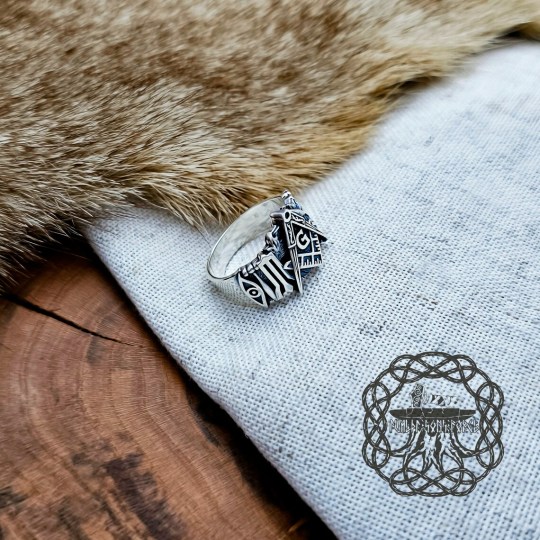

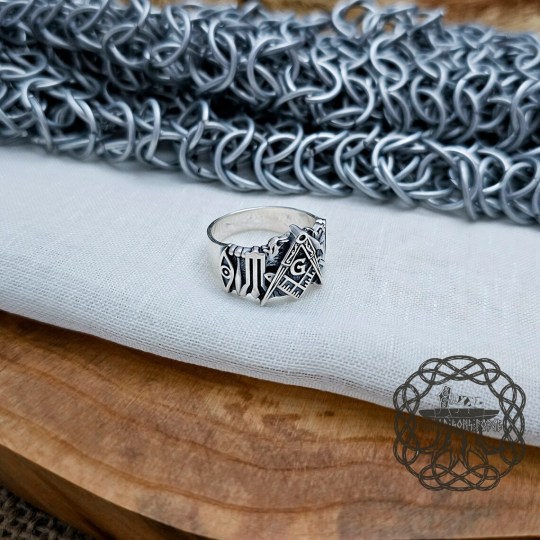
Masonic ring
Introducing our exquisite Masonic Ring, a timeless work of art meticulously crafted from sterling silver.
• Material: 925 Sterling Silver
• Weight - approx. 10 grams (0,45 oz)
#ivaldisonsforge#handmade#silverwork#silverring#silver#masonicring#ring#mason#jewelry#masonic#exclusivejewelry#handmadejewelry#MasonicRing#Freemasonry#MasonicJewelry#SecretSociety#MasonicBrotherhood#SquareAndCompass#MasonicSymbolism#FreemasonRing#Brotherhood#MasonicFashion#MasonicLodge#MasterMason#SecretKnowledge#MasonicTradition#AncientCraft
0 notes
Text
925 Sterling Silver Eye of Providence Ring, Gold Plated Masonic Signet Ring, Master Mason Symbol Square Ring, Freemason Jewelry, Unique Gift
This 925 Sterling Silver Eye of Providence Ring is a unique piece of handmade jewelry featuring a gold-plated Masonic signet design with a Master Mason symbol square ring. The ring's design includes an Eye of Providence symbol, making it a perfect gift for anyone interested in Masonic symbolism. The intricate design is carefully crafted with attention to detail, using high-quality materials for an elegant and sophisticated look. This Freemason jewelry is a timeless piece that can be worn every day or for special occasions, adding a touch of class and style to any outfit. Whether purchased as a gift or for personal use, this 925 Sterling Silver Eye of Providence Ring is sure to be treasured for a long time.
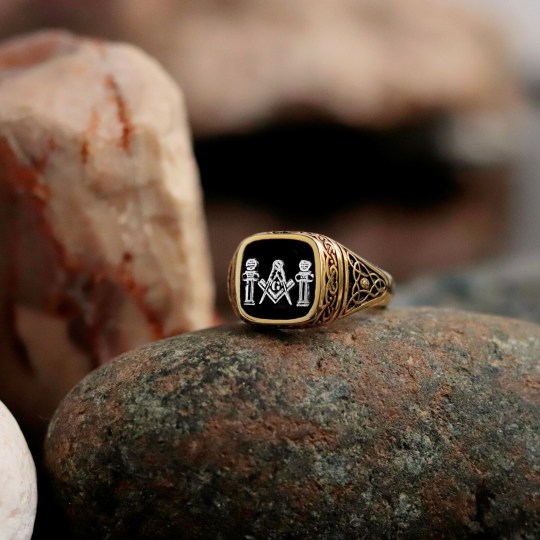

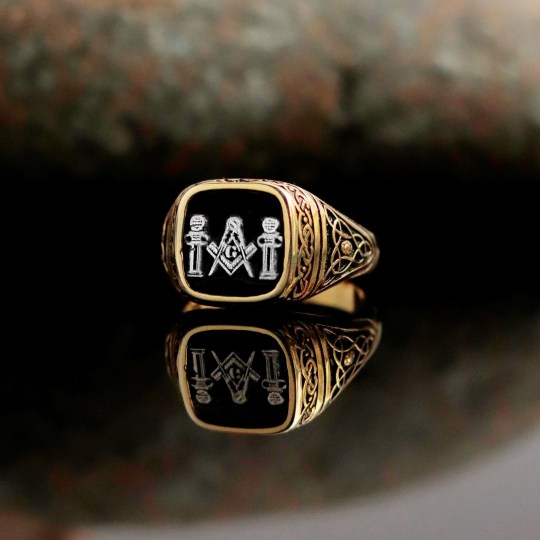
#WomenRing#MenRing#SignetRing#SilverRing#ChunkyRing#MasonicRing#FreemasonRing#HandmadeRing#PinkyRing#FamilyRing#GoldPlatedRing#FreemasonJewelry#UniqueGift
0 notes
Video
Square and Compass ring .925 Sterling Silver, Gold Plated - MasonArtStore.com - #masonic #mason #masonicring #masonicdegree #bluelodgemason #bluelodge #freemasonjewels #freemasonring #freemason #freemasonry #squareandcompass #squareandcompasses #squareandcompassring #scottishrite #masonicjewelry #gsymbol #masoniclogo #masonicemblem https://www.instagram.com/p/B0QC2i0j3Xa/?igshid=1c1o4cdwdgsjv
#masonic#mason#masonicring#masonicdegree#bluelodgemason#bluelodge#freemasonjewels#freemasonring#freemason#freemasonry#squareandcompass#squareandcompasses#squareandcompassring#scottishrite#masonicjewelry#gsymbol#masoniclogo#masonicemblem
2 notes
·
View notes
Photo

http://www.redbubble.com/people/faldet67-/works/41695067-knowledge?p=mens-premium-t-shirt&asc=u Knowledge is power! . . . #freemasons #freemason #freemasonic #freemasonry #freemasonary #freemasonlife #freemason_world #freemasonictshirt #freemasontattoo #freemasonofamerica #freemasonring #freemasonique #freemason_tee #freemasonicshirt #freemasonery #freemasony #freemasonsofamerica #freemasontemple #freemasonlodge #freemasonshall #freemasonafrica #freemasonhall #freemasontshirt #freemasonjewels #freemasonlebanon #freemasontomansion #freemasonryuk🇬🇧 #freemasonshirt #freemasonabbey #faldet #findyourthing #realdesigns #knowledges #knowledgeispower📚 #knowledgeseeker #eyeofhorus #allseeingeye https://www.instagram.com/p/B3itn6RhR8V/?igshid=l8ar9rch88d4
#freemasons#freemason#freemasonic#freemasonry#freemasonary#freemasonlife#freemason_world#freemasonictshirt#freemasontattoo#freemasonofamerica#freemasonring#freemasonique#freemason_tee#freemasonicshirt#freemasonery#freemasony#freemasonsofamerica#freemasontemple#freemasonlodge#freemasonshall#freemasonafrica#freemasonhall#freemasontshirt#freemasonjewels#freemasonlebanon#freemasontomansion#freemasonryuk🇬🇧#freemasonshirt#freemasonabbey#faldet
0 notes
Photo
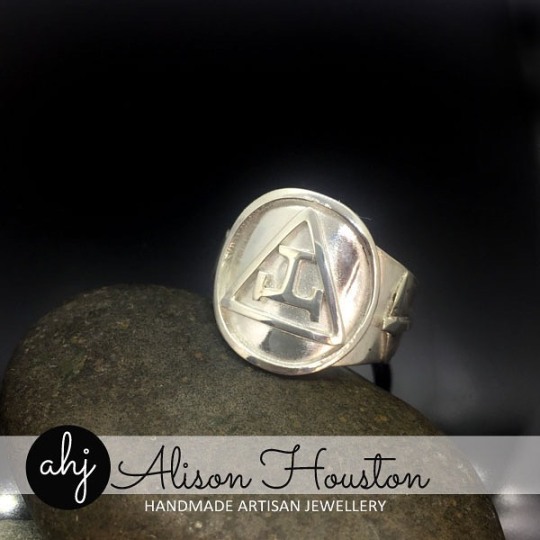
Custom order, Handmade gents Masonic ring #handmadejewellery #customjewellery #bespokejewellerydesign #masonicrings #masonic #masonicjewellery #mensrings #gentsring #gentsjewellery #freemasons #ukfreemasons #freemason #freemasonuk #freemasonring #freemasonary #alisonhoustonjewellery #scottishfreemasons #jewelleryinverclyde #inverclyde #scotland https://www.instagram.com/p/B3iEzHmDp99/?igshid=12nwtomteb5pj
#handmadejewellery#customjewellery#bespokejewellerydesign#masonicrings#masonic#masonicjewellery#mensrings#gentsring#gentsjewellery#freemasons#ukfreemasons#freemason#freemasonuk#freemasonring#freemasonary#alisonhoustonjewellery#scottishfreemasons#jewelleryinverclyde#inverclyde#scotland
0 notes
Link
This article was published online on February 10, 2021.
“Massachusetts abolished enslavement before the Treaty of Paris brought an end to the American Revolution, in 1783. The state constitution, adopted in 1780 and drafted by John Adams, follows the Declaration of Independence in proclaiming that all “men are born free and equal.” In this statement Adams followed not only the Declaration but also a 1764 pamphlet by the Boston lawyer James Otis, who theorized about and popularized the familiar idea of “no taxation without representation” and also unequivocally asserted human equality. “The Colonists,” he wrote, “are by the law of nature free born, as indeed all men are, white or black.” In 1783, on the basis of the “free and equal” clause in the 1780 Massachusetts Constitution, the state’s chief justice, William Cushing, ruled enslavement unconstitutional in a case that one Quock Walker had brought against his enslaver, Nathaniel Jennison.
Many of us who live in Massachusetts know the basic outlines of this story and the early role the state played in standing against enslavement. But told in this traditional way, the story leaves out another transformative figure: Prince Hall, a free African American and a contemporary of John Adams. From his formal acquisition of freedom, in 1770, until his death, in 1807, Hall helped forge an activist Black community in Boston while elevating the cause of abolition to new prominence. Hall was the first American to publicly use the language of the Declaration of Independence for a political purpose other than justifying war against Britain. In January 1777, just six months after the promulgation of the Declaration and nearly three years before Adams drafted the state constitution, Hall submitted a petition to the Massachusetts legislature (or General Court, as it is styled) requesting emancipation, invoking the resonant phrases and founding truths of the Declaration itself.
Here is what he wrote (I’ve put the echoes of the Declaration of Independence in italics):
The petition of A Great Number of Blackes detained in a State of Slavery in the Bowels of a free & christian Country Humbly shuwith that your Petitioners Apprehend that Thay have in Common with all other men a Natural and Unaliable Right to that freedom which the Grat — Parent of the Unavese hath Bestowed equalley on all menkind and which they have Never forfuted by Any Compact or Agreement whatever — but thay wher Unjustly Dragged by the hand of cruel Power from their Derest frinds and sum of them Even torn from the Embraces of their tender Parents — from A popolous Plasant And plentiful cuntry And in Violation of Laws of Nature and off NationsAnd in defiance of all the tender feelings of humanity Brough hear Either to Be sold Like Beast of Burthen & Like them Condemnd to Slavery for Life.
In this passage, Hall invokes the core concepts of social-contract theory, which grounded the American Revolution, to argue for an extension of the claim to equal rights to those who were enslaved. He acknowledged and adopted the intellectual framework of the new political arrangements, but also pointedly called out the original sin of enslavement itself.
Hall’s memory was vigorously kept alive by members and archivists of the Masonic lodge he founded, and his name can be found in historical references. But his life has attracted fresh attention in recent years from scholars and community leaders, both because he deserves to be widely known and celebrated and because inserting his story into the tale of the country’s founding exemplifies the promise of an integrated way of studying and teaching history. It’s hard enough to shine new light on an African American figure who has been long in the shadows, one who in important ways should be considered an American Founder. It can prove far more difficult to trace an individual’s “relationship tree” and come to understand that person, in a granular and even cinematic way, in the full context of his or her own society: family, school, church, civic organizations, commerce, government. Doing so—especially for figures and communities that have been overlooked—gives us a chance to tell a whole story, to weave together multiple perspectives on the events of our political founding into a single, joined tale. It also provides an opportunity to draw out and emphasize the agency of people who experienced oppression and domination. In the case of Prince Hall, the process of historical reconstruction is still under way.
When I was a girl, I used to ask what there was to know about the experience of being enslaved—and was told by kind and well-meaning teachers that, sadly, the lack of records made the question impossible to answer. In fact, the records were there; we just hadn’t found them yet. Historical evidence often turns up only when one starts to look for it. And history won’t answer questions until one thinks to ask them.
John Adams and Prince Hall would have passed each other on the streets of Boston. They almost certainly were aware of each other. Hall was no minor figure, though his early days and family life are shrouded in some mystery. Probably he was born in Boston in 1735 (not in England or Barbados, as some have suggested). It is possible that he lived for a period as a freeman before he was formally emancipated. He may have been one of the thousands of African Americans who fought in the Continental Army; his son, Primus, certainly was. As a freeman, Hall became for a time a leatherworker, passed through a period of poverty, and then ultimately ran a shop, from which he sold, among other things, his own writings advocating for African American causes. Probably he was not married to every one of the five women in Boston who were married to someone named Prince Hall in the years between 1763 and 1804, but he may have been. Whether he was married to Primus’s mother, a woman named Delia, is also unclear. Between 1780 and 1801, the city’s tax collectors found their way to some 1,184 different Black taxpayers. Prince Hall and his son appear in those tax records for 15 of those 21 years, giving them the longest period of recorded residence in the city of any Black person we know about in that era. The DePaul University historian Chernoh M. Sesay Jr.’s excellent dissertation, completed in 2006, provides the most thorough and rigorously analyzed academic review of Hall’s biography that is currently available. (The dissertation, which I have drawn on here, has not yet been published in full, but I hope it will be.)
Hall was a relentless petitioner, undaunted by setbacks. When Hall submitted his 1777 petition, co-signed by seven other free Black men, to the Massachusetts legislature, he was building on the efforts of other African Americans in the state to abolish enslavement. In 1773 and 1774, African Americans from Bristol and Worcester Counties as well as Boston and its neighboring towns put forward six known petitions and likely more to this end. Hall led the formation of the first Black Masonic lodge in the Americas, and possibly in the world. The purpose of forming the lodge was to provide mutual aid and support and to create an infrastructure for advocacy. Fourteen men joined Hall’s lodge almost surely in 1775, and in the years from then until 1784, records reveal that 51 Black men participated in the lodge. Through the lodge’s history, one can trace a fascinating story of the life of Boston’s free Black community in the final decades of the 18th century.
Why did Hall choose Freemasonry as one of his life’s passions? Alonza Tehuti Evans, a former historian and archivist of the Most Worshipful Prince Hall Grand Lodge of the District of Columbia, took up that question in a 2017 lecture. Hall and his fellow lodge members, he explained, recognized that many of the influential people in Boston—and throughout the colonies—were deeply involved in Freemasonry. George Washington is a prominent example, and symbolism that resonates with Masonic meaning adorns the $1 bill to this day. Hall saw entrance into Freemasonry as a pathway to securing influence and a network of supporters.
Hall submitted a petition to the Massachusetts legislature requesting emancipation, invoking the resonant phrases and founding truths of the Declaration of Independence.
In a world without stable passports or identification documents, participation in the order could provide proof of status as a free person. It offered both leverage and legitimacy—as when Prince Hall and members of his lodge, in 1786, offered to raise troops to support the commonwealth in putting down Shays’s Rebellion.
In the winter and spring of 1788, Hall was leading a charge in Boston against enslavers who made a practice of using deception or other means to kidnap free Black people, take them shipboard, and remove them to distant locations, where they would be sold into enslavement. He submitted a petition to the Massachusetts legislature seeking aid—asking legislators to “do us that justice that our present condition requires”—and publicized his petition in newspapers in Virginia, New York, Pennsylvania, and Vermont.
In the summer of that year, a newspaper circulated an extract of a letter from a prominent white Bostonian who had assisted Hall on this very matter. The unnamed author of the letter reports that he had been visited by a group of free Black men who had been kidnapped in Boston and had recently been emancipated and returned to the city. They were escorted to his house by Hall, and they told the story of their emancipation. One of the men who had been kidnapped was a member of Hall’s Masonic lodge. Carried off to the Caribbean and put on the auction block, the kidnapped men found that the merchant to whom they were being offered was himself a Mason. Mutual recognition of a shared participation in Freemasonry put an end to the transaction and gave them the chance to recover their freedom.
Prince Hall’s work on abolition and its enforcement was just the beginning of a lifetime of advocacy. Disillusioned by how hard it was to secure equal rights for free Black men and women in Boston, he submitted a petition to the Massachusetts legislature seeking funds to assist him and other free Blacks in emigrating to Africa. That same year, he also turned his energies to advocating for resources for public education. Through it all, his Masonic membership proved both instrumental and spiritually valuable.
Founding the lodge had not been easy. Although Hall and his fellows were most likely inducted into Freemasonry in 1775, they were never able to secure a formal charter for their lodge from the other lodges in Massachusetts: Prejudice ran strong. Hall and his fellows had in fact probably been inducted by members of an Irish military lodge, planted in Boston with the British army, who had proved willing to introduce them to the mysteries of the order. Hall’s lodge functioned as an unofficial Masonic society—African Lodge No. 1—but received a formal charter only after a request was sent to England for a warrant. The granting of a charter by the Grand Lodge of England finally arrived in 1787.
In seeking this charter, Hall had written to Masons in England, lamenting that lodges in Boston had not permitted him and his fellows a full charter but had granted a permit only to “walk on St John’s Day and Bury our dead in form which we now enjoy.” Hall wanted full privileges, not momentary sufferance. In this small detail, though, we gain a window into just how important even the first steps toward Masonic privileges were. In the years before 1783 and full abolition of enslavement in Massachusetts, Black people in the state were subjected to intensive surveillance and policing, as enslavers sought to keep their human property from slipping away into the world of free Blacks. Membership in the Masons was like a hall pass—an opportunity to have a parade as a community, to come out and step high, without harassment. That’s what it meant to walk on Saint John’s Day—June 24—and to hold funeral parades for the dead.
Whether that stepping-out day remained June 24 is unclear. As Sesay writes, “Boston blacks, including Prince Hall, first applied to use Faneuil Hall in 1789 to hear an ‘African preacher.’ On February 25, 1789, the Selectmen accepted the application of blacks to use Faneuil Hall for ‘public worship.’ ” By 1820, the walk on Saint John’s Day appears to have become African Independence Day and was celebrated on July 14, Bastille Day, much to the displeasure of at least one newspaper. An unattributed column in the New-England Galaxy and Masonic Magazine complained about the annual parade in recognizably racist tones (the mention of “Wilberforce” at the end is a reference to William Wilberforce, the British campaigner against enslavement):
This is the day on which, for unaccountable reasons or for no reasons at all, the Selectmen of Boston, permit the town to be annually disturbed by a mob of negroes … The streets through which this sable procession passes are a scene of noise and confusion, and always will be as long as the thing is tolerated. Quietness and order can hardly be expected, when five or six hundred negroes, with a band of music, pikes, swords, epaulettes, sashes, cocked hats, and standards, are marching through the principal streets. To crown this scene of farce and mummery, a clergyman is mounted in their pulpit to harangue them on the blessings of independence, and to hold up for their admiration the characters of “Masser Wilberforce and Prince Hall.”
Well after Hall’s death, the days for stepping out continued in Boston—an expression of freedom and the claiming of a rightful place in the polity. The lodge that Hall founded continued too. It is the oldest continuously active African American association in the U.S., with chapters now spread around the country. Its work in support of public education has endured. In the 20th century the Prince Hall Freemasons made significant contributions to the NAACP, in many places hosting the first branches of the organization. In the 1950s alone, the group donated more than $400,000 to the NAACP Legal Defense and Educational Fund (equivalent to millions of dollars today). Thurgood Marshall was a member.
for all of what we now know to be Prince Hall’s importance, I learned of him only recently. In 2015 the National Archives held a conference about the Declaration of Independence, inspired by my own research on the document. At the conference, another colleague presented a paper on how abolitionists had been the first people to make use of the Declaration for political projects other than the Revolution itself. A few months earlier I had come across the passage from Hall’s 1777 petition that I shared above, and that so beautifully resonates with the Declaration; at that conference, I suddenly learned the important political context in which it fit. I had published a book on the Declaration of Independence—Our Declaration—in 2014, but until the spring of 2015, I had never heard of Hall.
Yet I have been studying African American history since childhood. When I was in high school, my school didn’t do anything to celebrate Black History Month. My father encouraged me to take matters into my own hands and propose to the school that I might curate a weekly exhibit on one of the school’s bulletin boards. The school was obliging. It offered me the one available bulletin board—in a dark corner in the farthest remove of the school’s quads. This was not the result of malice, just of a lack of attention to the stakes. But I was glad to have access to that bulletin board, and I dutifully filled it with pictures of people like Carter G. Woodson and Mary McLeod Bethune and Thurgood Marshall, and with excerpts from their writings.
I am deeply aware of how much historical treasure about Black America is hidden, and have been actively trying to seek it out. While I was on the faculty of the University of Chicago, I helped found the Black Metropolis Research Consortium, a network of archival organizations in Chicago dedicated to connecting “all who seek to document, share, understand and preserve Black experiences.” And while I was at Chicago—somewhat in the spirit of that old bulletin board—I curated an exhibit for the special-collections department of the campus library on the 45 African Americans who’d earned a doctorate at the university prior to 1940—the largest number of doctorates awarded to African Americans up to that time by any institution in the world. Even so, I had not known about Prince Hall.
Having discovered Hall at the ridiculous age of 43, I have since made it a mission to teach others about him. At Harvard’s Edmond J. Safra Center for Ethics, we have undertaken a major initiative to develop civic-education curricula and resources. Among the largest projects is a year-long eighth-grade course called “Civic Engagement in Our Democracy.” One of the units in that course is centered on Hall’s life. Through him and his exploration of the meaning of social contracts and natural rights, and of opportunity and equality, we teach the philosophical foundations of democracy, reaching through Hall to texts that he also drew on, and whose authors are required reading for eighth graders in Massachusetts—for instance, Aristotle, Locke, and Montesquieu. These writers and thinkers were important figures to Freemasons in Hall’s time.
Too much treasure remains buried, living mainly in oral histories, not yet integrated into our full shared history of record. That history can strike home in unexpected ways. Not long ago, I was talking with my father about Prince Hall and the curriculum we were developing. His ears pricked up. Only then did I learn that my grandfather, too, had been a member of the Prince Hall Freemasons.”
This article appears in the March 2021 print edition with the headline “A Forgotten Founder.”
DANIELLE ALLEN is a political philosopher and the James Bryant Conant University Professor at Harvard. She is the author of Talking to Strangers, Our Declaration, and Cuz.
#Danielle Allen#Prince Hall#freemasonry#freemason#freemasons#revolutionary war#founding fathers#history#black history#american soldier#american history#black history month
44 notes
·
View notes
Photo

Thanks for the kind words! **5 STAR** " the ring was absolutely gorgeous, my mom loved it for Mother's day. Also very nice customer service." Natalie #freemasonring #stainlesssteelrings #24kgoldring www.mykinnarii.com
0 notes
Photo

@greatsmason (@get_regrann) - /G\ 💥Shop Here: ➡@greatsmason (BIO Link) 💥Follow me: ➡ @greatsmason For More 👉👉👉https://www.greatsmason.com 👉👉👉https://www.�greatsmason.com Tag & Share with your Friends⤵ #Masonic, #Freemason, #Freemasonry, #Mason, #Maçon, #Maçonaria, #Somoteitbe, #PHA, #357, #PrinceHallMason, #F&AM, #2b1ask1, #Square, #Compass, #Freemasonshirts, #Masonicshirts, #MasonsShirts, #MaconsCamiseta, #MasonicShop, #Somoteitbe, #FreemasonSymbols, #FreemasonRing, #FreemasonDefinition, #Pha, #PrinceHallAffilation, #Phamily, #OES, #OrderoftheEasternStar, #TravelingMan https://www.instagram.com/p/B53-s16ny26/?igshid=tevn0xq2z07x
#masonic#freemason#freemasonry#mason#maçon#maçonaria#somoteitbe#pha#357#princehallmason#f#2b1ask1#square#compass#freemasonshirts#masonicshirts#masonsshirts#maconscamiseta#masonicshop#freemasonsymbols#freemasonring#freemasondefinition#princehallaffilation#phamily#oes#orderoftheeasternstar#travelingman
0 notes
Video
Aristocracys Reign of The Pharaonic Bloodlines through Hidden Freemasonr...
0 notes
Text
Gold Plated Yod Masonic Ring, Handmade 14th Degree Ring, 925 Sterling Silver Freemason Ring, Men Pinky Ring, Unique Jewelry, Birthday Gift
This Gold Plated Yod Masonic Ring is a stunning piece of unique handmade jewelry that features a 14th degree symbol on a 925 sterling silver Freemason ring. This ring is gold-plated with Yod Masonic symbol, making it a perfect birthday gift for men or anyone interested in Masonic symbolism. The ring's intricate design is carefully crafted with attention to detail, using high-quality materials for an elegant and sophisticated look. The ring is perfect for everyday wear or for special occasions, adding a touch of class and style to any outfit. Whether purchased as a gift or for personal use, this Gold Plated Yod Masonic Ring is sure to be treasured for years to come.


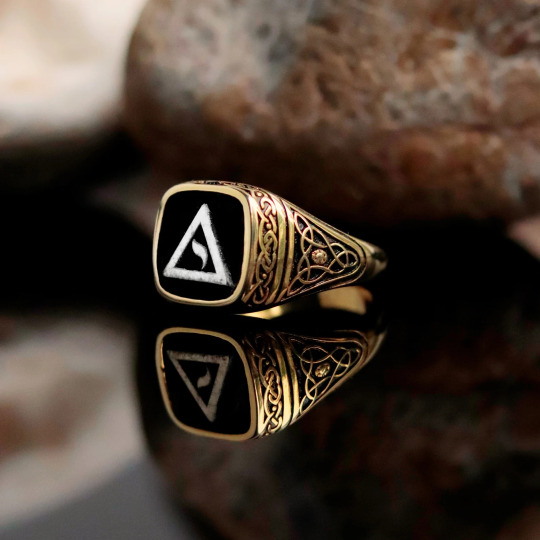
#WomenRing#MenRing#SignetRing#SilverRing#ChunkyRing#MasonicRing#FreemasonRing#HandmadeRing#PinkyRing#FamilyRing#GoldPlatedRing#UniqueJewelry#BirthdayGift
0 notes
Text
Acacia Masonic Ring, Gold Plated Square Signet Ring, Freemason Statement Silver Ring, Mason Jewelry, Handmade Chunky Ring, Anniversary Gift
This Acacia Masonic Ring is a stunning piece of handmade jewelry, perfect for those looking to make a statement. The ring features a gold-plated square signet design with a Freemason statement silver ring, making it a perfect anniversary gift for anyone interested in Masonic symbolism. The chunky ring is carefully crafted with attention to detail, using high-quality materials for an elegant and sophisticated look. The Acacia Masonic Ring is a timeless piece of jewelry that can be worn every day or for special occasions, adding a touch of class to any outfit. Whether purchased as a gift or for personal use, this ring is sure to be treasured forever.




#WomenRing#MenRing#SignetRing#SilverRing#ChunkyRing#MasonicRing#FreemasonRing#HandmadeRing#PinkyRing#FamilyRing#GoldPlatedRing#MasonJewelry#AnniversaryGift
0 notes
Text
Masonic Oval Signet Ring, Men Statement Ring, Handmade Freemason Silver Ring, Gold Plated Eye of Providence Ring, Everyday Jewelry, Dad Gift
This Masonic oval signet ring is a statement piece of handmade jewelry designed for men. The ring features a Freemason silver design with a gold-plated Eye of Providence symbol, making it a perfect gift for dads or anyone interested in Masonic symbolism. Crafted with attention to detail, this ring can be worn every day and is sure to add a touch of elegance and sophistication to any outfit. Whether worn to make a statement or as a symbol of personal significance, this ring is a timeless piece of jewelry that is sure to be treasured for years to come.
#WomenRing#MenRing#SignetRing#SilverRing#ChunkyRing#MasonicRing#FreemasonRing#HandmadeRing#PinkyRing#FamilyRing#GoldPlatedRing#EverydayJewelry#DadGift
0 notes
Text
925 Silver Triangle Signet Ring, Yod Masonic Ring, Freemason Oval Pinky Ring, Unique Jewelry, Scottish Rite 14th Degree Ring, Handmade Gift
This 925 silver triangle signet ring is a unique piece of handmade jewelry, featuring a Yod Masonic design and oval ring shape. The ring is adorned with the Scottish Rite 14th degree symbol, making it a perfect gift for Freemasons or anyone interested in Masonic symbolism. Crafted with high-quality materials and attention to detail, this ring is sure to make a statement and add a touch of sophistication to any outfit.




#WomenRing#MenRing#SignetRing#SilverRing#ChunkyRing#MasonicRing#FreemasonRing#HandmadeRing#PinkyRing#FamilyRing#GoldPlatedRing#UniqueJewelry#HandmadeGift
0 notes
Text
Unique Pyramid Ring, Handmade Eye of Providence Signet Ring, Chunky Masonic Pinky Ring, Freemason Statement Ring, Silver Jewelry, Men Gift
This Unique Pyramid Ring is a striking piece of handmade silver jewelry that combines both style and symbolism. Featuring the Eye of Providence symbol and a chunky pyramid design, this Masonic signet ring makes a bold statement. The ring is perfect for those who want to showcase their affiliation with the Freemasonry or simply appreciate unique and meaningful accessories. This Freemason statement ring is an ideal gift for men who appreciate high-quality and stylish jewelry. Wear this eye-catching Pyramid Ring with pride to display your love for the Freemasonry and its history.


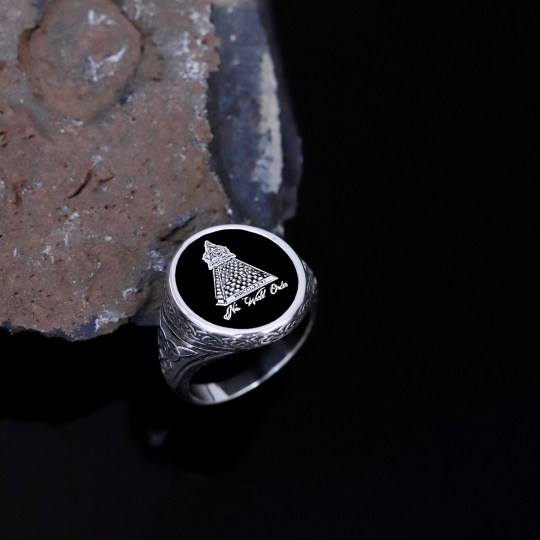
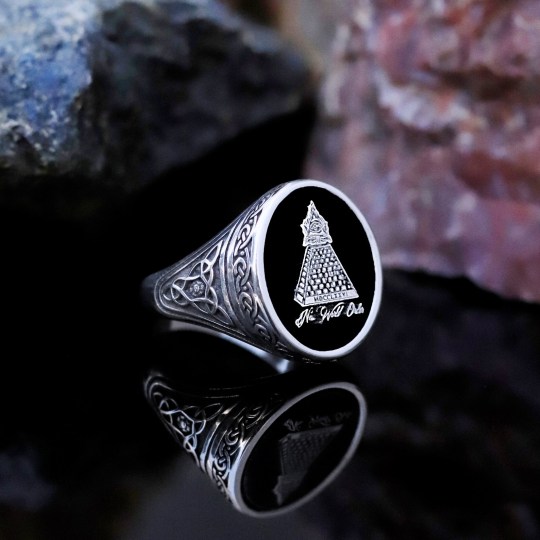
#WomenRing#MenRing#SignetRing#SilverRing#ChunkyRing#MasonicRing#FreemasonRing#HandmadeRing#PinkyRing#FamilyRing#GoldPlatedRing#SilverJewelry#MenGift
0 notes
Text
Templar Knight Seal Ring, Gold Plated Crusader Red Cross Ring, Masonic Cross Signet Ring, Freemason Jewelry, Silver Pinky Ring, Husband Gift
This Templar Knight Seal Ring is a magnificent piece of jewelry that is both stylish and meaningful. With its gold-plated finish and striking red cross design, this Crusader ring makes a bold statement. The Masonic cross signet ring is made from high-quality silver and is the perfect addition to any Freemason's jewelry collection. It makes an excellent gift for a husband who appreciates unique and meaningful accessories. Wear this Templar Knight Seal Ring with pride to showcase your admiration for the historic knights who fought for their beliefs and values.
#WomenRing#MenRing#SignetRing#SilverRing#ChunkyRing#MasonicRing#FreemasonRing#HandmadeRing#PinkyRing#FamilyRing#GoldPlatedRing#FreemasonJewelry#HusbandGift
0 notes
Text
Masonic Pillar Seal Ring, Handmade Eye of Providence Masonic Signet Ring, Silver Statement Ring, Oval Pinky Ring, Men Jewelry, Birthday Gift
This Handmade Masonic Pillar Seal Ring is a stunning piece of men's jewelry that exudes style and sophistication. Crafted with attention to detail, this Masonic signet ring features the Eye of Providence symbol and an oval-shaped design. Made from high-quality silver, this statement ring is perfect for those who want to display their affiliation with the Freemasonry. It makes an ideal birthday gift for a friend or loved one who appreciates unique and meaningful accessories. Wear this elegant and stylish Masonic ring as a proud display of your membership in this historic organization.
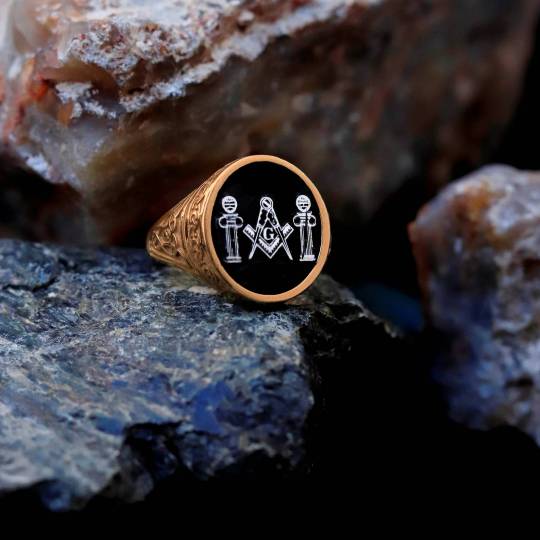


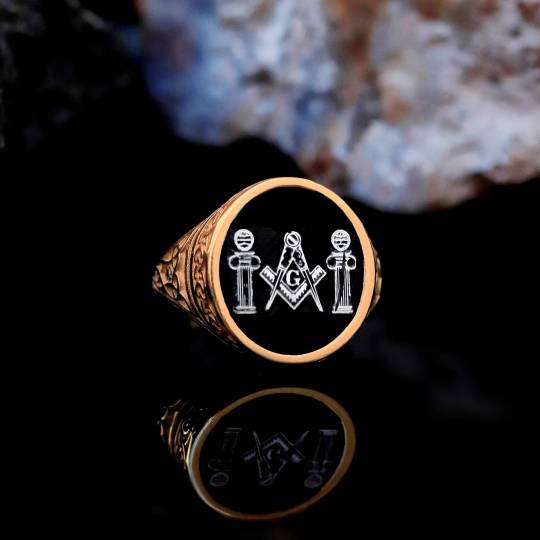
#WomenRing#MenRing#SignetRing#SilverRing#ChunkyRing#MasonicRing#FreemasonRing#HandmadeRing#PinkyRing#FamilyRing#GoldPlatedRing#MenJewelry#BirthdayGift
0 notes